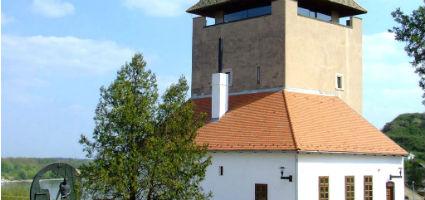2024. April 24. Wednesday
Castle Museum - Dunaföldvár
 |
Address: 7020, Dunaföldvár Rátkay köz 2.
Phone number: (75) 541-000, (75) 541-001
E-mail: muvhaz@dunafoldvar.hu
Opening hours: 19.04-10.31 Tue-Sun 10:00-18:00
|
No documents of the construction of the building named Öregtorony, Csonkatorony, or Töröktorony in Dunaföldvár are available. When was it built? Nobody knows, but it is probable that in the beginning of the 16th century.
Szinán Csausz, the chronicle of the military expedition of 1543, first mentioned the fortress in documents. Later on, a Turkish traveler, Evlia Cselebi and a military engineer Ottendorf Henrik wrote about the town and the fortress.
However, the nice tower and the strong planks did not exist longer that the next twenty-five years. After the Hungarians took Buda back in the fall of 1868, the Turkish burned down everything in their way while retreating.
In 1703, the legendary Kuruc general, Vak Bottyán took the Földvár, that became famous as the bridgehead of the Transdanubian expedition. After the War of Independence failed, the military significance of the fortress lessened and it was used as prison.
In the beginning of the 19th century, an extra building was added to the tower on the north-west, which was left intact when the fortress was reconstructed in 1974. Ever since then, a museum is open in the building.
Szinán Csausz, the chronicle of the military expedition of 1543, first mentioned the fortress in documents. Later on, a Turkish traveler, Evlia Cselebi and a military engineer Ottendorf Henrik wrote about the town and the fortress.
However, the nice tower and the strong planks did not exist longer that the next twenty-five years. After the Hungarians took Buda back in the fall of 1868, the Turkish burned down everything in their way while retreating.
In 1703, the legendary Kuruc general, Vak Bottyán took the Földvár, that became famous as the bridgehead of the Transdanubian expedition. After the War of Independence failed, the military significance of the fortress lessened and it was used as prison.
In the beginning of the 19th century, an extra building was added to the tower on the north-west, which was left intact when the fortress was reconstructed in 1974. Ever since then, a museum is open in the building.
|
Permanent exhibitions
|
|||